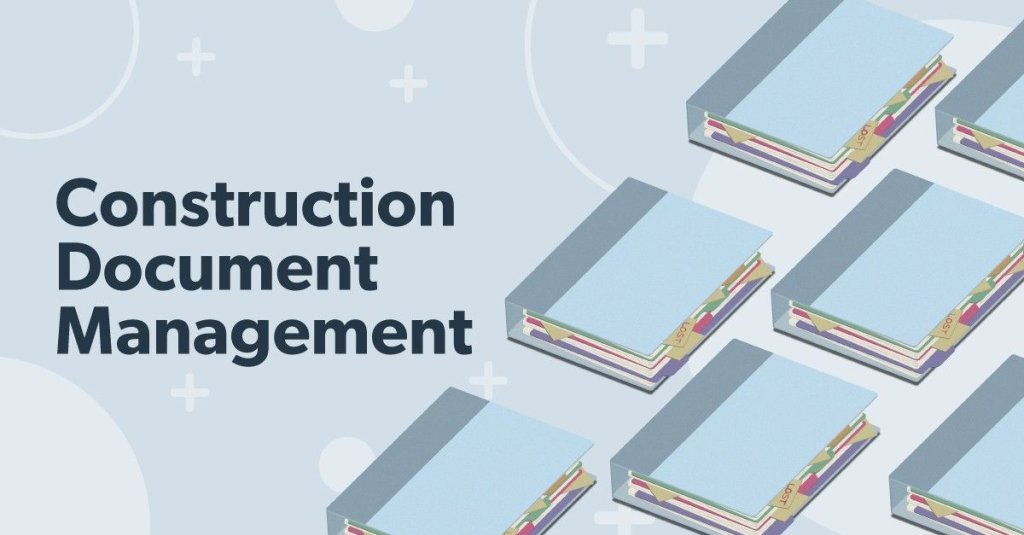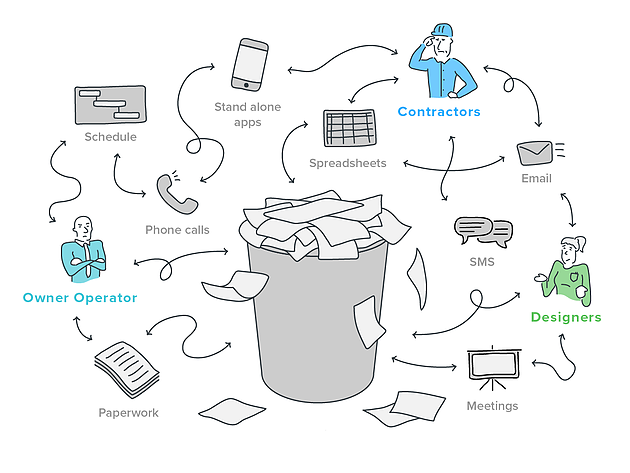From Chaos to Control: Harnessing the Potential of Construction Document Management
Optimizing Job Cooperation: Engineer's Finest Practices in Building Paper Monitoring
In the complex world of architectural jobs, the efficient monitoring of building and construction files stands as a keystone for success. Architects, with their meticulous attention to detail and cutting-edge style options, are tasked with coordinating a harmony of stakeholders, resources, and timelines. Among this complexity lies an essential question: exactly how can engineers enhance cooperation processes to boost project end results? By exploring essential strategies such as leveraging cloud-based platforms, developing robust interaction methods, and ensuring data safety, designers can elevate their paper administration methods to new elevations.
Leveraging Cloud-Based Systems
Leveraging cloud-based platforms is an essential approach for contemporary designers in maximizing building and construction record monitoring procedures. By transitioning from typical paper-based systems to cloud remedies, architects can simplify collaboration, improve document access, and boost total task efficiency. Cloud-based systems provide engineers the capability to shop, share, and upgrade building and construction papers in real-time, making sure that all staff member have accessibility to one of the most existing info no matter of their place. This availability promotes seamless communication and sychronisation among project stakeholders, causing less errors and hold-ups in the building and construction procedure.
Additionally, cloud-based systems offer a secure atmosphere for keeping delicate project info, offering encryption, regular back-ups, and user approval setups to shield information stability. Designers can likewise profit from the scalability of cloud options, enabling them to readjust storage space capability and capability based on task demands. Overall, leveraging cloud-based platforms empowers designers to enhance their construction paper administration processes, driving better cooperation, efficiency, and success in their tasks.
Implementing Version Control Systems
Having developed the benefits of cloud-based systems in construction document administration, designers can currently improve their record control procedures by implementing Version Control Solution. Variation Control Solution (VCS) are crucial devices that track changes in records, making certain that staff member are always working with the most current and most accurate information. By executing VCS, architects can maintain a centralized database where all task documents are stored, enabling smooth partnership while reducing the risk of mistakes and version problems.
One key benefit of Variation Control Solution is the capability to track the full background of file changes, allowing users to return to previous versions if required (construction document management). This function is especially useful in building and construction projects where layout models and modifications prevail. Additionally, VCS helps with much better interaction amongst employee by giving a clear audit path of who made specific adjustments and when they were made. This openness not just enhances responsibility however additionally helps in resolving disputes or disparities that might occur during the project lifecycle.
Developing Interaction Procedures
To make sure reliable and efficient task control, architects have to develop clear and robust interaction protocols within their building file administration processes. Communication procedures specify the approaches, frequency, and networks via which staff member exchange info, updates, and comments. One crucial facet of developing these methods is establishing a centralized interaction platform where all project-related discussions and document sharing can occur. This system might be a task administration software, email strings, or cloud-based storage space options. By establishing guidelines on how info is distributed and exactly how group members interact with each other, engineers can improve the circulation of data and protect against miscommunications or delays in the building her latest blog and construction procedure.
Additionally, communication procedures need to additionally consist of standards on just how to handle conflicts, change orders, and urgent concerns that may develop throughout the job lifecycle. Establishing an organized strategy to communication makes certain that all stakeholders get on the very same page, promotes openness, and inevitably adds to the successful conclusion of the building job.
Utilizing BIM Software Application for Sychronisation
BIM software application plays a critical role in improving sychronisation among job staff member in the building and construction industry. Structure Details Modeling (BIM) promotes collaboration by providing a centralized platform where engineers, engineers, service providers, and other stakeholders can collaborate in a worked with manner. Through BIM software, project individuals can access and update a shared version which contains thorough info about the building design, construction elements, and task timetables.

In addition, BIM software allows real-time collaboration and interaction amongst staff member, despite their physical area. Via cloud-based BIM platforms, job stakeholders can access the newest task details, track adjustments, and make educated choices without delay. Overall, leveraging BIM software for coordination enhances job effectiveness, efficiency, and eventually results in effective task results.
Ensuring Data Protection and Conformity
In the world of construction paper management, securing information honesty and making certain regulative conformity are vital factors to consider for engineers and other task stakeholders. Architects have to apply robust safety and security measures to shield delicate job details from unauthorized gain access to or violations. Making use of safe cloud storage space solutions with encryption procedures and gain access to controls can assist alleviate risks connected with data burglary or loss. Frequently updating software program and systems, carrying out security audits, and offering team training on data safety best techniques are vital action in maintaining a safe setting for building and construction file administration.

Conclusion
To conclude, engineers can enhance project cooperation in construction document monitoring by leveraging cloud-based systems, implementing variation control systems, establishing communication protocols, using BIM software for coordination, and making certain data security and conformity. These best methods help streamline the construction process, boost communication amongst project stakeholders, and boost performance in job delivery. By adhering to these guidelines, engineers can efficiently take care of construction records and assist in successful project results.
Via BIM software, job participants can access and upgrade a shared design that contains detailed details regarding the structure design, construction components, and job timetables.
Through cloud-based BIM platforms, job stakeholders can access the latest job information, track changes, and make notified decisions without delay - construction document management. Overall, leveraging BIM software application for control enhances job effectiveness, efficiency, and eventually leads to successful job outcomes
In verdict, architects can enhance project collaboration in construction paper monitoring by leveraging cloud-based systems, implementing version control systems, establishing interaction methods, utilizing BIM software program for control, and ensuring information protection and conformity. These finest techniques assist enhance the building and construction process, enhance communication amongst job stakeholders, and boost efficiency in task distribution.